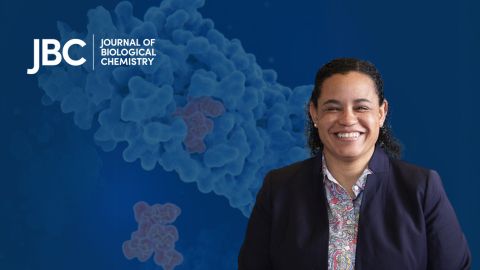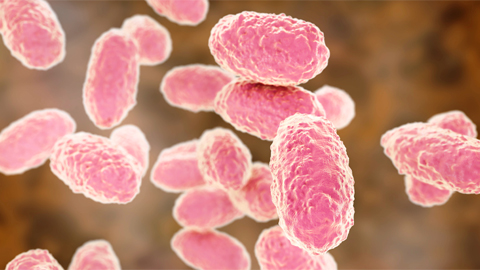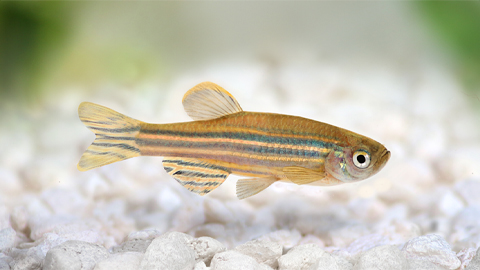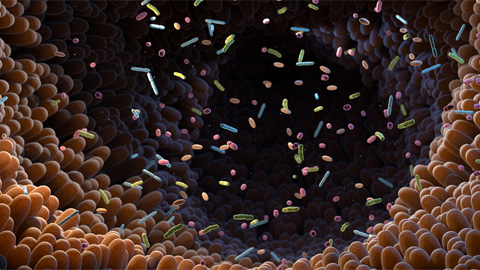Proteomics reveals hallmarks of aging in brain stem cells
Myelin, a fatty substance akin to wire insulation, allows fast neuronal signaling both within the brain and to the rest of the body. When myelin in the brain or spinal cord is damaged, adult stem cells called oligodendrocyte progenitor cells, or OPCs, respond by developing into new, fully fledged oligodendrocytes that wrap new myelin around neurons, protecting them and restoring their ability to carry fast electrical messages.

The human body’s ability to regenerate lost myelin declines with age. Patients with multiple sclerosis are intimately familiar with this shift. The disease, usually diagnosed in a patient’s twenties, arises when a person develops an immune response to myelin proteins. It starts out as a series of flare-ups of symptoms such as muscle weakness and numbness, followed by months or even years in remission as new oligodendrocytes provide fresh myelin. The disease shifts to a progressively worsening disability in middle age.
Neuroscientist Alerie Guzman de la Fuente is interested in developing a better understanding of oligodendrocyte progenitor cells to determine why remyelination falters with age. The answer could inform scientists who hope someday to treat MS with pro-remyelinating therapies.
“Most labs studying oligodendrocyte progenitor biology use neonatal OPCs to test drugs,” Guzman de la Fuente said. “These cells are incredibly powerful at forming myelin.” That makes them an imperfect system for studying how myelin formation goes awry with age, she said. “We think that studying adult OPCs … is more relevant to what will happen in the progressive phases of MS, in patients over 50.”
In a recent paper in the journal Molecular & Cellular Proteomics, Guzman de la Fuente and her colleagues in Robin Franklin’s lab at the University of Cambridge reported a comparison of the proteomes of OPCs from neonatal, young adult and mature mice. Franklin’s lab and others previously have studied the transcriptome of these cells. However, Guzman de la Fuente emphasized, RNA and protein levels are not always perfectly correlated.
Some protein features were quite stable through a mouse’s lifetime. Others changed dramatically. The team focused on the proteins that changed most between young and mature adulthood, and they identified a few patterns.
As with many aging cells, the stem cells from older mice showed some gene-expression drift, acting as if they had begun to differentiate but without gaining the ability to make myelin. The team noticed that as animals aged, their stem cells were more likely to have difficulty metabolizing cholesterol, an important component of myelin; older OPCs were more apt to express proteins involved in other neurodegenerative disorders such as Alzheimer’s and Parkinson’s disease, although what these changes mean remains to be elucidated . Finally, as with many aging cells, the OPCs from older mice also showed changes in protein homeostasis.
It will take time and further experiments to determine which of these changes cause the remyelination decline that appears with age. But, Guzman de la Fuente said, having a clearer picture of how the brain changes with aging can only help future efforts to treat multiple sclerosis.
Enjoy reading ASBMB Today?
Become a member to receive the print edition four times a year and the digital edition monthly.
Learn moreGet the latest from ASBMB Today
Enter your email address, and we’ll send you a weekly email with recent articles, interviews and more.
Latest in Science
Science highlights or most popular articles

Meet Donita Brady
Donita Brady is an associate professor of cancer biology and an associate editor of the Journal of Biological Chemistry, who studies metalloallostery in cancer.

Glyco get-together exploring health and disease
Meet the co-chairs of the 2025 ASBMB meeting on O-GlcNAcylation to be held July 10–13, 2025, in Durham, North Carolina. Learn about the latest in the field and meet families affected by diseases associated with this pathway.

Targeting toxins to treat whooping cough
Scientists find that liver protein inhibits of pertussis toxin, offering a potential new treatment for bacterial respiratory disease. Read more about this recent study from the Journal of Biological Chemistry.

Elusive zebrafish enzyme in lipid secretion
Scientists discover that triacylglycerol synthesis enzyme drives lipoproteins secretion rather than lipid droplet storage. Read more about this recent study from the Journal of Biological Chemistry.

Scientists identify pan-cancer biomarkers
Researchers analyze protein and RNA data across 13 cancer types to find similarities that could improve cancer staging, prognosis and treatment strategies. Read about this recent article published in Molecular & Cellular Proteomics.

New mass spectrometry tool accurately identifies bacteria
Scientists develop a software tool to categorize microbe species and antibiotic resistance markers to aid clinical and environmental research. Read about this recent article published in Molecular & Cellular Proteomics.

